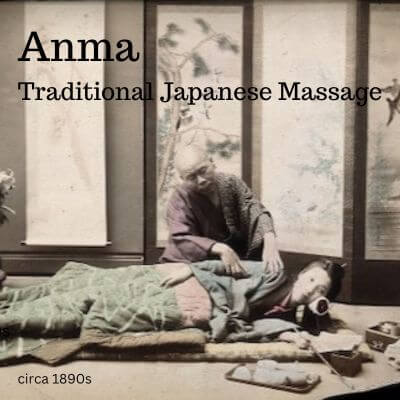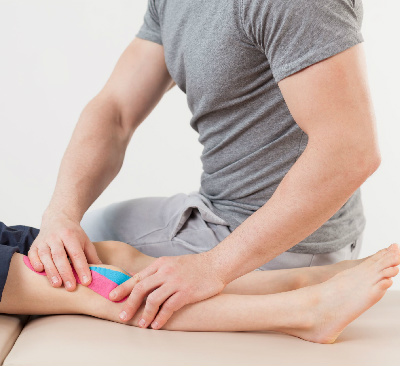- Home
- Asian Massage
- Amma Massage Therapy
As an affiliate with Bookshop, Amazon, and other programs, I may earn revenue from qualifying purchases through affiliate links. This does not affect the price you pay. Privacy Policy / Disclosures. This site is for educational purposes only.
Search this site:
What is Anma and Amma Massage Therapy?
Anma is Japanese massage that has ancient roots in Nepal, Tibet, and western China. The word anma translates as "press and rub" and is pronounced anmo (AHN-mo) in Chinese and anma (AHN-ma) in Japanese and Korean. Anma is sometimes called amma massage therapy.

This style of massage was introduced to Japan around the fifth or sixth century (sources vary on the exact date). Japanese anma then developed independently and became significantly different from the modern-day Chinese and Korean versions.
Traditionally passed down through families, anma became deeply woven into Japanese history and culture. Each amma master/instructor practices and teaches slightly different techniques. Styles of anma include Genko, Koho, and Yoshida-ryū.
Techniques, which are applied to tsubo (acupoints) and along the body’s 14 meridians (12 primary energy channels and the two governing vessels), include stroking, kneading, and stretching. Application may range from very fast and light to deep and slow to stimulate muscles and promote health. Combining techniques reduces tension and pain in the body and stimulates the internal organs, promoting health by correcting imbalances.
Anma has seven foundational techniques:
- Ju Neetsu Ho – Kneading
- Kei Satsu Ho – Light stroking
- Ap Paku Ho – Pressure
- Shin Sen Ho – Vibrating
- Ko Da Ho – Percussion
- Kyoku Te Ho – Special percussion techniques
- Un Do Ho – Movement, stretching, and exercise techniques
There are also four supplemental techniques:
- Kyo Satsu Ho – Stroking or rotating techniques with heavy pressure
- Ha Aku Ho – Gripping and squeezing
- Ken Biki Ho - Pulling and traction techniques
- Shin Kin Ho - Stretching the muscles, tendons, and fascia
Traditionally, anma is performed on a mat on the floor but can also be given on a table, or in any other position better suited for the receiver. Practitioners rarely use oils and lotions and typically do the massage with the client fully clothed; however, the techniques can be used directly on the skin.
Primary Source: Anma: The Art of Japanese Massage by Shogo Mochizuki
Anma in America
In 1971, Kabuki Hot Springs opened in Japantown, San Francisco, California, and formally introduced anma to the United States. This traditional Japanese spa employed practitioners who had trained in Japan and came to the U.S. to work.
By 1977, the spa's owners wanted a local source of practitioners. The owners asked Takashi Nakamura from the Kansai School of Massage in Osaka, Japan, to teach in San Francisco. He taught anma at the Kabuki Shiatsu School of Massage, which later became the Amma Institute. When Nakamura returned to Japan in 1982, his student David Palmer (the "father of chair massage") took over the Amma Institute.
After the Amma Institute closed, Eric Eisenmann founded the School of Japanese Healing Arts (SOJHA) in 2013 to continue teaching the original curriculum and authentic traditions of Koho Anma.
Source: The Anma Institute of Traditional Japanese Massage
Video Demo of Anma Massage

Study: The Effects of Anma—Randomized Trial
Amma Massage Therapy vs. Shiatsu
Although anma is still very popular in Japan, and has practitioners and schools around the world, you can usually more easily find shiatsu massage in the Western world.
Shiatsu developed in the early 20th century from the anma tradition. A main difference between the two is that anma's foundation technique is kneading, which is combined with several other techniques, including percussion. Shiatsu uses mostly pressure techniques and uses neither kneading or percussion. While these two types of Japanese massage do share some of the same or similar techniques, they are often used differently, according to Mochizuki.
Suggested book: Shiatsu Anma Therapy. DoAnn's Short & Long Forms
Amma Therapy vs. Anma Japanese Massage
As mentioned earlier, anma is also part of the Korean tradition. Amma Therapy, developed by Korean-born Tina Sohn, is distinct from anma Japanese massage.
Amma Therapy combines techniques and treatment strategies using traditional Asian medical principles to assess and evaluate energy imbalances and a Western approach to organ dysfunctions. In addition to pressure techniques, Amma Therapy includes diet, detoxification methods, herbal and vitamin supplements, and therapeutic exercises.
See Sohn's book, Amma Therapy: A Complete Textbook of Oriental Bodywork and Medical Principles.
Photo Credit: See page for author, CC BY 4.0, via Wikimedia Commons.




